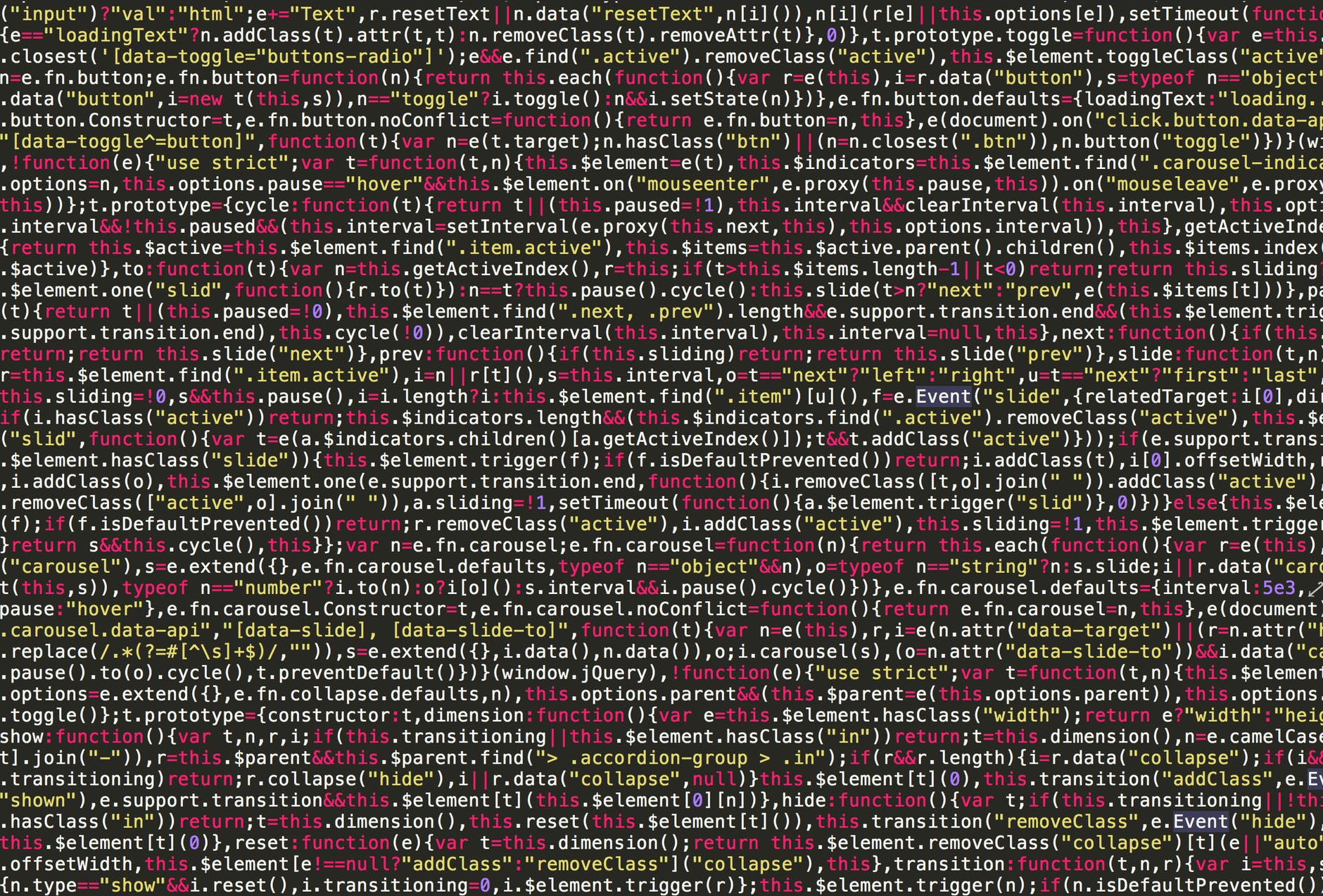In the world that we currently live in, everything mostly takes place online. This is only possible due to the help of codes, programs, and also programming languages including Python, Java, C, C++, and more. All of these languages comprise of several data types. There are mainly three fundamental techniques for data representation which programmers are probably going to experience. They include – abstract data types, objects, and algebraic data types.
Abstract Data Types (as often as possible truncated “ADTs”) are likely comfortable to designers with a software engineering foundation, and arithmetical information types are likely comfortable to engineers with a background in programming and computer science. Objects are an idea which most designers are incredibly acquainted with on a level of practicality, however, many battles to define decisively.
These three methodologies each have particular tradeoffs, as well as recognition. With their attributes, they can empower designers to pick the most beneficial methodology for any given issue. This post mainly focuses on ADT.
Amongst the other things that you will be learning in this blog post, why don’t we start from the very beginning? Let’s try to get an understanding of what ADT is and how it basically works.
What is an Abstract Data Type?
Table of Contents
Abstract data type or ADT is nothing but a class or type for those objects you can define the behavior of, by values set along with operations set.
The meaning of this data type just notices what operations you need to perform yet, not how you execute all of these tasks. Moreover, it doesn’t indicate how you can compose or organize the data in memory. Also, you will come across the algorithms you need to utilize in order to implement those operations. People generally refer to it as “abstract” since it offers a view that is independent of implementation. Reflection is the way toward giving just the fundamentals and concealing the subtleties.
You, as a user, do not have to know how these data types work or how you can implement them. Let’s take an example, you must have used data types like int, char, etc. having only known that you can operate them. However, you might not have understood or learn how you can implement the same. Similarly, in this case, you just need to understand what a particular data type can do, however, you do not have to understand its implementation process.
Operations and Classifying Types in ADT
Types, regardless of whether worked in or client characterized, you can name it alterable or changeless. You can change the objects of a variable: that is, they give tasks which when executed reason the consequences of different procedures on a similar article to give various outcomes. So the Date is variable since you can call setMonth and watch the change with the getMonth activity. Be that as it may, String is permanent since its activities make new String objects instead of changing existing ones. Here and there you can give a type in two structures, an alterable and a changeless structure. StringBuilder, for instance, is an impermanent variant of String (in spite of the fact that the two are absolutely not a similar Java type, and are definitely not tradable).
The activities of an ADT are as follows:
- Creators make new objects of the sort. A maker may accept an article as a contention, yet not an object of the sort you are developing.
- Producers make new articles from old objects of the sort. The concatenating technique for String, for instance, is a maker: it takes two strings and delivers another one speaking to their link.
- Observers take objects of the theoretical sort and return objects of an alternate kind. The size strategy for List, for instance, restores an int.
- Mutators change objects. They include a strategy for List, for instance, transforms a rundown by adding a component as far as possible.
Now that you have a hang of what ADT is, let’s read about the various types of these data types.
Types of Abstract Data Type
You can broadly classify ADT into three types:
List ADT
In a list, you can store the detain a key sequence that has a head structure comprising of pointers, count, and address of compare method. The data node includes the pointer to a particular data structure as well as a self-referential pointer that directly points to the following node in the list. A list involves components of a similar sort orchestrated in the successive order and you can perform the accompanying tasks on the list.
- get() – Return a component from the list at some random position.
- insert() – Insert a component at any place of the list.
- remove() – Remove the primary event of any component from a non-void list.
- removeAt() – Remove the component at a predetermined location from a non-void list.
- replace() – Replace a component at any place by another component.
- size() – Return the number of components in the list.
- isEmpty() – Return the value true only if the list is vacant, in any other case, return false.
- isFull() – Return true only if the list is full, in any other case, return false.
Stack ADT
In the case of Stack ADT Implementation, rather than storing the information in every node, you need to store the pointer to data. The program distributes memory for both the data and you can also pass the address to the stack ADT. You can encapsulate the head node along with the data nodes in the ADT. The calling method can just observe the pointer that points to the stack.
The head structure of stack, additionally, contains a pointer to the stack top and keeps track of the count of entries that are in stack currently.
A Stack includes components of a similar sort orchestrated in consecutive order. Besides, all operations happen at a solitary end that is at the top of the stack and you can perform the following tasks:
- push() – Insert a component toward one side of the stack we refer to as top.
- pop() – Remove as well as return the component at the top point of the stack, on the off chance that it is not vacant.
- peek() – Return the component at the top point of the stack without expelling it, however, under the condition the stack isn’t vacant.
- size() – Return the number of components in the stack.
- isEmpty() – Return true only if the stack is vacant, in any other case, return the value false.
- isFull() – Return true if and only if the stack is full, however, in any other case, return false.
Queue ADT
The Queue abstract data type basically follows the fundamental plan of the stack ADT. All the nodes involve a void pointer directly to the data while the link pointer points directly to the following component in the queue. The main responsibility of the program is to allot memory in order to store the data. It contains components of a similar sort organized in successive order. Tasks happen at the two closures, you need to get on with the insertion process toward the end while the deletion, at the front. You can perform the following operations:
- enqueue() – Insert a component toward the finish of the queue.
- dequeue() – Remove and also return the primary component of the queue, if it is not vacant.
- peek() – Return the component of the queue, however, without evacuating it, if it is not vacant.
- size() – Return the number of components in the queue.
- isEmpty() – Return true only if the queue is vacant, in any other case, return a false value.
- isFull() – Return true if and only if the queue is full, however, in any other case, it will return the value false.
Here, you have come across the list of abstract data type. Let us now dive into how you can design the same.
ADT Design
Planning an ADT includes picking great tasks and deciding how they ought to carry on. Here are a couple of dependable guidelines. It’s smarter to have a couple, basic activities that you can consolidate in incredible manners, as opposed to bunches of complex tasks.
Every activity ought to have an all-around characterized reason and ought to have intelligible conduct as opposed to a panoply of exceptional cases. We most likely shouldn’t add an entirety activity to List, for instance. It may help customers who work with arrangements of Integers, yet shouldn’t you be saying something about arrangements of Strings? Or on the other hand, settled records? All these exceptional cases would make the total a hard activity to comprehend and utilize.
The arrangement of activities ought to be satisfactory as there must be sufficient to do the sorts of calculations customers are probably going to need to do. A decent test is to watch that each property of an object of the sort that you can separate. For instance, if there were no get activity, we would not have the option to discover what the components of a rundown are. Fundamental data ought not to be unreasonably hard to get. For instance, the size strategy isn’t carefully vital for List, since we could apply to jump on expanding lists until we get a disappointment, yet this is wasteful and badly arranged.
The sort might be conventional: a rundown or a set, or a diagram, for instance. Or then again it might be area explicit: a road map, a worker database, a telephone directory, and so on. Be that as it may, it ought not to blend conventional and space explicit highlights. A Deck type planned to speak to an arrangement of playing a game of cards shouldn’t have a nonexclusive include technique that acknowledges subjective articles like ints or Strings. On the other hand, it wouldn’t bode well to put an area explicit strategy like arrangement cards into the conventional kind List. Now, get an overview of the various advantages of this data type.
Advantages of Abstract Data Type
Like most things, ADT also has its own set of pros and cons. Here you will read about some of its major pros and the reasons why programmers prefer to use it.
Portrayal Independence
Most of the program get autonomous of the theoretical information type’s portrayal so that you can improve the portrayal without breaking the whole program.
Particularity
With the portrayal of freedom, the various pieces of a program become less reliant on different parts and on how you can actualize those different parts.
Compatibility of Parts
Different usage of any ADT may have diverse execution attributes. With conceptual information types, it gets simpler for each piece of a program to utilize an execution of its information types that will be increasingly proficient for that specific piece of the program.
Reflection
The client of an ADT doesn’t have to know or even see any of the usage subtleties of the ADT, which diminishes the multifaceted nature of the programming task.
Confinement of Bugs
On the off chance that there are bugs either in the portrayal or usage of the ADT, the bugs are neighborhood to the ADT, and you cannot bring about by code that utilizes the ADT.
Limitation of changes
In the event that the software engineer chooses to change the portrayal of an ADT (i.e, to change the portrayal of a set from a connected rundown to a stack or exhibit), at that point you just need to change the usage of the ADT; you cannot influence the code that utilizes the sort.
Embodiment
The embodiment of “dark boxing” guarantees that you can not undermine the data, and guarantees that you can liberate your code-base from blunders.
Heartiness
Your projects will be hearty and be able to get blunders and forestall exemptions.
Conclusion
This blog aims to help you learn about ADT and its various types – List, Queue, and Stack. Further, you have also read about the various operations in ADT. Also, you learned about the designing of ADT in detail. In the end, you read about some of the numerous benefits of ADT. If you wish to learn more then you can check out a few blogs on this topic and get a better grasp of this topic.







